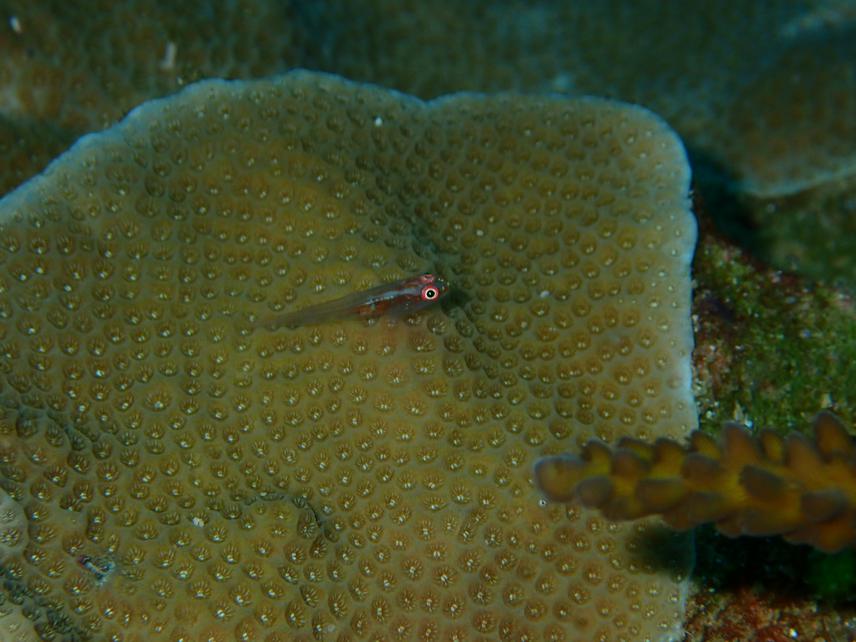Saul Ovidio Gonzalez Murcia
Human activities are causing coral reef degradation around the world. As a consequence, organisms like sponges and ascidians could replace corals as the major habitat-forming organisms. However, they are unlikely to perform the same ecological functions that corals provide and have negative impacts on organisms that use corals as their main habitat. To help resolve this, I will study the diversity of sponges and ascidians in Kimbe Bay and will examine whether sponges and ascidians are becoming more abundant in coral reefs systems and evaluate the potential negative impacts that encrusting sponges and an invasive ascidian have on reef associated fishes.

A tiny gobbie resting on a coral. © Saul Gonzalez Murcia.
Frequent and severe coral bleaching events represent major disturbances that damage coral reefs and provide little time for recovery. After coral systems have been destabilised, other organisms colonize the vacant space turning reefs into alternative states that may be dominated by either algae, cyanobacterial mats, or sponges. In stressed reefs habitats, sponges and ascidians can increase in abundance, overtake live corals and dominate the reef substratum. The role of sponges in the Indo-Pacific centre of biodiversity has received little attention. Coral reefs systems in Kimbe Bay are encompassed in the Coral Triangle Region that stands out because of their extraordinary species diversity. Many of these species are endemic or have small habitat ranges and therefore strongly rely on a specific type of reef habitat. Unfortunately, reef systems here have been severely affected by anthropogenic activities like terrestrial runoff increased by agriculture and unplanned development of coastal areas or introduction of invasive species. Monitoring programs conducted since 1998 have reported a reduction in coral cover for inshore and offshore reefs in Kimbe Bay. The impact of sponges and ascidians in reef health and fish diversity is yet to be studied in this region. In Kimbe Bay, in Papua New Guinea, sponges are extremely diverse and are naturally a significant component of reef habitats. However, some encrusting sponges and an invasive ascidian appear to be increasing.
The main goal of the project is to assess the diversity of sponges and ascidians in Kimbe and the negative impacts that these organisms can have on corals and fish communities. Therefore, we will describe interactions among invasive ascidians- sponges and corals and keep track of the growth of the sponges and ascidians to detect changes in sponge growth and the outcome of the interactions between sponges and corals. Additionally, we will remove sponges and ascidians to evaluate the effect of these organisms on reef associated fishes. Exploring sponge and ascidians diversity in Kimbe Bay and their relationships with reef associated fishes. We expect to incorporate members of the local community and students of adjacent schools intalks and workshops regarding the biodiversity of sponges, ascidians and fishes in the area to create public awareness about potential negative impacts that some sponges and ascidians have on coral reefs and fishes.
This project will generate a baseline about sponge diversity in Kimbe, generate information to assess potential negative impacts of sponges and ascidians on reef systems and fishes and will support future conservation and management initiatives.